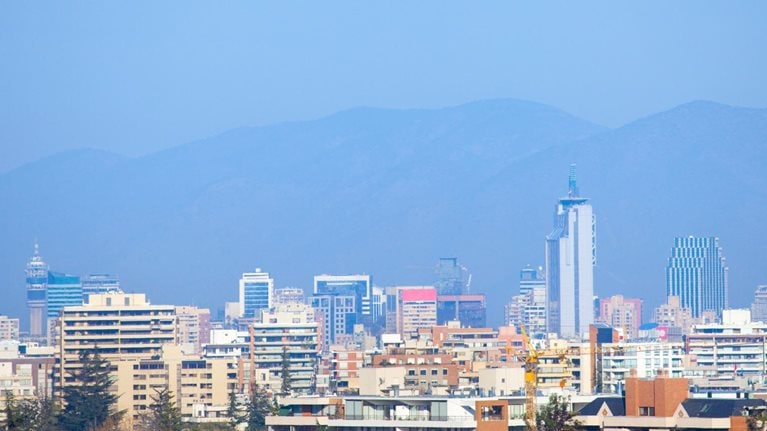The urban world is shifting. Today only 600 urban centers generate about 60 percent of global GDP. While 600 cities will continue to account for the same share of global GDP in 2025, this group of 600 will have a very different membership. Over the next 15 years, the center of gravity of the urban world will move south and, even more decisively, east.
Today, major urban areas in developed-regions are, without doubt, economic giants. Half of global GDP in 2007 came from 380 cities in developed-regions, with more than 20 percent of global GDP coming from 190 North American cities alone. The 220 largest cities in developing-regions contributed another 10 percent.
But by 2025, one-third of these developed-market cities will no longer make the top 600; and one out of every 20 cities in emerging-markets is likely to see its rank drop out of the top 600. By 2025, 136 new cities are expected to enter the top 600, all of them from the developing world and overwhelmingly—100 new cities—from China.
To help companies find growth opportunities and policymakers to manage the increasing complexity of larger cities more effectively, MGI has built on its extensive research on the urbanization of China, India, and Latin America to develop Cityscope, a database on more than 2,000 metropolitan areas around the world, the largest of its kind.
Companies looking for cities that will generate the most GDP growth will find another different list of potential urban hot spots. The top 100 cities ranked by their contribution to global GDP growth in the next 15 years—we call this group the City 100—will contribute just over 35 percent of GDP growth to 2025. And the top 600—the City 600—will generate 60 percent of global GDP growth during this period.
Until now, a company strategy focused on developed economies together with emerging-market megacities (with populations of ten million or more) has made sense—this combination generates more than 70 percent of global GDP today. But these regions and very large cities in developing economies are likely to generate only an estimated one-third of global growth to 2025. A strategy focused on this combination will be insufficient for companies seeking growth.
It is a common misperception that megacities have been driving global growth for the past 15 years. In fact, most have not grown faster than their host economies, and MGI expects this trend to continue. Today's 23 megacities—with populations of 10 million or more—will contribute about 10 percent of global growth to 2025, below their 14 percent share of global GDP.
In contrast, 577 middleweights—cities with populations of between 150,000 and 10 million, are seen contributing more than half of global growth to 2025, gaining share from today's megacities. By 2025, 13 middleweights are likely to be have become megacities, 12 of which are in emerging-markets (the exception is Chicago) and seven in China alone.
Emerging-market mega—and middleweight cities together—423 of them are included in the City 600—are likely to contribute more than 45 percent of global growth from 2007 to 2025. Across the world, MGI identifies 407 emerging middleweight cities contributing nearly 40 percent of global growth, more than the entire developed world and emerging-markets megacities combined.
By 2025, developing-region cities of the City 600 will be home to an estimated 235 million middle-class households earning more than $20,000 a year at purchasing power parity (PPP). This compares with more than 210 million such households expected in the cities of developed regions. So even at the higher end of the middle-class segment, there will be more households in emerging-market cities than in developed ones.
MGI finds that population in the City 600 will grow an estimated 1.6 times faster than the population of the world as a whole. By 2025, the City 600 will be home to an estimated 310 million more people of working age—and account for almost 35 percent of the expansion of the potential global workforce. Almost all of this increase is likely to be in the cities of emerging-markets—and two-thirds in the leading cities of China and India.
By 2025, there are likely to be about 13 million more children aged up to 15 in these 600 cities than there were in 2007 but with very different trends across regions. An estimated seven million additional children will be in the City 600's Chinese cities compared with 2007, despite the fact that the number of children in China overall is declining, and MGI sees cities in the United States and Canada being home to three million more children in 2025 than in 2007. By combining demographic and income distribution data, MGI estimates that the number of children in households with an annual household income above $20,000 is likely to grow more than 10 times as fast in the cities of developing-regions as those in developed economies. The research also shows that aging in cities is not just a developed-country phenomenon. The top 216 cities in China will have 80 million new older citizens and Shanghai is expected to be home to twice as many older people as New York.
Around the world, the size of households is declining and leading to an increase in the number of households. MGI expects the number of households in the world's leading cities to grow at 2.3 times the rate of global population. The City 600 alone is likely to see the formation of 250 million new households. An estimated 85 percent of these households will form in the cities of emerging regions; half of the total will be in China's cities alone. Globally, the three cities that will experience the strongest growth in housing demand will be Beijing, Shanghai, and Tokyo.
The economic role of large cities varies widely among regions today—as do their future growth patterns. China's rapid growth is fueled by the continued growth of its megacities and the emergence of new ones. India's urbanization is at a relatively early stage, while Latin America's largest cities are giving way to fast-expanding middleweights. It is clear that there is no "one size fits all" approach to tapping into the urban markets of emerging economies.
Choosing the right urban markets requires combining granular market intelligence with company-specific information on the potential of different urban geographies and the cost of reaching them. A strategy based on clusters of cities is an attractive option for many companies, particularly in large countries like China and India that have significant regional differences in their market characteristics.


